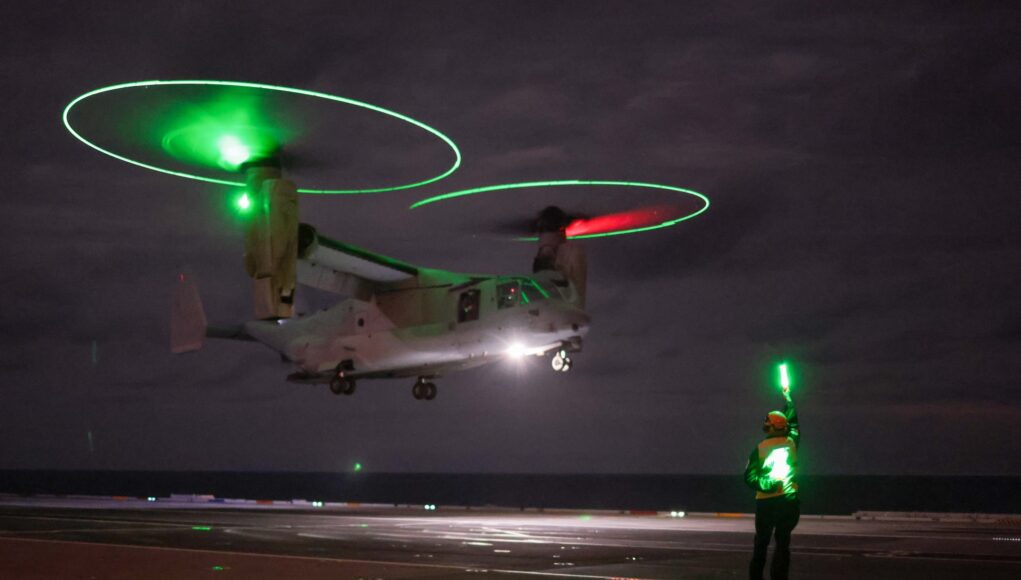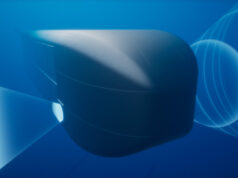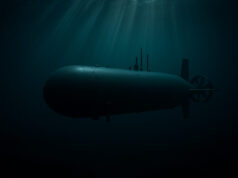American MV-22 Osprey aircraft joined British aircraft carrier HMS Prince of Wales as the vessel operates off the U.S. coast.
The 2nd Marine Aircraft Wing is the major east coast aviation unit of the United States Marine Corps and is headquartered in Marine Corps Air Station Cherry Point, North Carolina. The Wing provides the aviation combat element for the II Marine Expeditionary Force.
The Osprey is a tiltrotor aircraft that combines the vertical takeoff, hover and vertical landing qualities of a helicopter with the long-range, fuel efficiency and speed characteristics of a turboprop aircraft.
We know how you feel…@2nd_MAW joined us yesterday for 4 squadrons of decks this week…
✅MV22 Osprey last night
…what will they bring tonight…
Keeping up relations….#SemperFi
🇬🇧 🤝 🇺🇸 https://t.co/KeERkxnSf6 pic.twitter.com/M3ZebQfR3D
— HMS Prince of Wales (@HMSPWLS) September 27, 2023
British aircraft carrier HMS Prince of Wales recently arrived at Naval Station Mayport in the U.S.
This is the ship’s first visit to Naval Station Mayport, and it’s expected to be in port for five days. Notably, her sister, HMS Queen Elizabeth, has previously visited the port.
HMS Prince of Wales will soon be operating off the Eastern Seaboard of the USA. Planned trials revolve around cutting-edge technology, including F-35 Lightning stealth fighters, Osprey tilt-rotors, and the advanced Mojave drone.
She’s kind of a big deal!
Watch as Britain’s biggest warship, HMS Prince of Wales, arrives at @NS_Mayport, in glorious Florida sunshine. pic.twitter.com/TORnHqhecb— UK Defence Staff in US (@UKdefUS) September 20, 2023
Commanding Officer Captain Richard Hewitt was quoted in a press release as saying:
“We are all excited for the longest deployment of HMS Prince of Wales. Being the first to operate with this level of drones will be a huge achievement and keep us on the front foot as we prepare for the next major Carrier Strike Group deployment in 2025.”
The ship will soon embark F-35B stealth fighters for the final phase of pushing the boundaries of the UK’s fifth-generation jets’ operating limits from the carrier.
“The F-35 has undergone extensive trials and assessment both in the US and UK operating from the flight decks of both Queen Elizabeth-class carriers and has deployed operationally. Pushing the boundaries will see more advanced take-off and landing techniques tested (SRVL, for one) , allowing the F-35s to return to the carrier faster and heavier (i.e with more fuel and weapons aboard) which cuts the time between sorties, allowing the ship to launch more strike missions, faster.”
What is Shipborne Rolling Vertical Landing and why is it a good idea?
HMS Prince of Wales will also be looking to launch and land the Lightning jets in the heaviest sea states, proving that they can operate the jets in the harshest environments.

“Once the work with the F-35s is complete, focus will shift again to the next-generation of Short Take-Off and Landing drones currently under development. The Mojave drone can carry a 1,500lb payload of missiles, rockets or bombs and has been specifically designed to land and take-off from short runways, or flight decks. Trials are lined up to see whether the Mojave can land on the 901ft-long deck of the Prince of Wales. The carrier’s stint Stateside will conclude by expanding the US Marine Corps’ unique tilt-rotor MV-22 Ospreys operating limits.”














The RN might not buy this machine but it’s good to know it can deploy from the QE Class carriers. This will add another capability for the rapidly growing UK/US Naval Alliance.
Quite so… but I do hope they buy some. It could be so useful for the QE class….
It’s to expensive. We won’t be buying them.
Not only that no requirement as they have Merlin.
The USMC has the small UH-1 type and nothing in between that and the Osprey.
RN and RM Merlin large helicopter is twice the capability even of the bigger MH60
Too big, too expensive.
Definitely expensive, but not too big for the Queen Elizabeth class:) MV/CMV-22s fold up like Transformers seem to take less space than a Chinook, which aren’t navalized and don’t store well aboard ship. USMC MV-22s are operating from the Australian Canberra class with success, the QEs are way bigger than those. Likewise USN LHAs and LHDs are also quite a bit smaller than the QEs and operate lots of MV-22s at a time. They could be a real boon to the QEs, among other things they can transport the power module of the F-35B engine and do it quickly and at great distance.
I am ready to be correct if I’m wrong but can’t the osprey not be used for mid air refueling as well?
It was a possibility discussed but it’s still not even a power point presentation. It would only become reality if the USMC decided to pay for it to be developed.
Ah that’s what I must have read somewhere?
It would be a great addition to increase the flying time of the F35b if it ever became reality
Done and done testing completed
https://www.marinecorpstimes.com/news/your-marine-corps/2014/12/28/mv-22b-osprey-to-get-a-tanker-option/
There was a program called VARS, sadly I think it was shelved. I think it should be resurrected, LHAs and LHDs (as well as the QEs) should have an organic tanking capability, the F-35B has the least range of the F-35 variants by a wide margin and everything should be done to extend it as much as possible.. Apparently VARS was a collaboration with the British company Cobham.
I think VARS has been in service since 2019. It’s a palletised system like Crowsnest so it’s not like you order an MV-22 tanker. You roll it onboard an existing platform.
Unfortunately VARS was canceled in the FY2020 budget:(
Also would there not be some scope for a commercial derivative for use in remote areas on islands and continental areas that don’t have conventional airfields?
They are great machines. Quite a few people want some for the RN but unless it was a purchase for example as the medium helicopter program it’s probably not worth it.
If that money is put into drones they could do all the COD stuff and more. Having drones being able to operate from the fleet support ships will be great in the future.
Do the RN Merlin’s or wildcats have an underslung hook?
I think remember seeing them doing COD with the usn and it looked like there was chains/straps as a makeshift hook.
The Merlin’s do and they are used to do so, you can find a good few YouTube videos of them doing it…12,000lb slung under so a big load ( remember they only pretend to be a medium lift rotors, so can shift close to a heavy lift). Wildcat can undersling up to a ton but normal usage is 500kg.
if you ever want to see exactly what type of sorties the RN will be doing with any airframe have a look at the instructions for use forms ( by airframe type) these are the instructions on how to record all flight activity on the RNs Goldesp system…basically at the end it has a list of standard sortie codes..
MOd form 799/B4(wildcat)
MOD from 799/4(merlinHM)
First off I don’t really do lbs. How many pounds are in a ton? Also how many kilos are in a ton. I looked at Google but there are different ton/tonne etc.
is 12,000lbs for the HM2. Can the HC4 do more. That’s a hefty load.
I love the merlin, such a great machine. Even an updated one new today will still be great.
I hope wildcat can get upgrades needed to be a sub and surface hunter.
2204.6 lbs in a metric tonne (1,000kg)
2240 lbs in a British ton (about 1 tonne)
2000 lbs in a US ton (about 90% tonne)
Thanks
You don’t do lbs? The Imperial system is a British invention!
The younger generation have moved on and leave primary school without dreck in their heads such as 16 oz in a lb, 14 lb in a st, 8 st in a cwt, and 20 cwt in a ton. I’m sure they are all the better for it. Who would make up such a system from scratch?
The primary role of MV 22 in USMC service is combat assault and support. Replacing helicopters, it is faster with longer range, allowing launch from greater distance. It would only make sense for UK to acquire if we intended to use one of the carriers routinely in an amphibious role. There is plenty of space in the QEs to carry spare engines and other stores. Shore to ship transport of other lighter loads could be done by drones.
Mohave would be very useful if it could carry sensors as capable as those on Crowsnest- range, altitude, persistence all improved.
The USN is retiring the C-2 Greyhound and moving to the CMV-22 for Carrier Onboard Delivery/logistical support. The West coast CVNs are already using the CMV-22. Here is an interesting podcast interview about the CMV-22. It could fulfill the same functions on the QEs.
https://www.youtube.com/watch?v=qRl9ylp6tUo&t=7s
One of the reasons that the extra heavy jackstay for RAS was binned is the CMV22. No need to RAS an F35 Engine when you can get one flown out. If the USMC are embarked they will either have one with them or know a man who they can borrow one from!
I thought modern engines are really reliable and hardly need changing. For U.K. carriers I imagine they just carry the spares on the carrier.
Still need to get the post to the sailors if they even do that now. Perhaps it’s mostly electronic.
Question time: do u know if the RN. Merlin’s, wildcats have underslung hooks? The commando HC4 will. I remember seeing a picture years ago of the RN doing RAS and it looked like the Merlin’s had cables wrapped through the cabin or attached at multiple points underneath and a hook on the bottom. Perhaps it was a dream.
Hi monkey yes to both Merlin and wildcat..I sent on a different post the details around the sortie codes used on the RNs GOLDesp system ( where they record what each asset has done).
Ok thanks. Trying to find pictures was a bit difficult. Found a few
What is really needed is getting some firm work up around the AEW replacement for crowsnest…it’s out of service date is only 6 years away..so their needs to be some proper progress..we need to have a decent 3ton + drone in play to carry the new system as well as develop the new system itself.
If the drones can do it and the data links can work 100% then that’s ideal.
Perhaps a new. Radar will be looked into. It doesn’t need to be a bag underneath. Could be a flat array, multiple arrays, taking tech from new radars. So long as it doesn’t cost loads.
That will likely be MQ-9B STOL (5-6 ton MTOW).
Out of service ? It only came into IOC this or last year ?. Development was so long Im sure previous dates are *out of date*
The rn is still hoping for an unmanned crows nest replacement for 2030.
Its best to describe it as fanciful, obviously it would have had to be started by now if not earlier. Unfunded and unlikely
“A 7-year timeframe appears to be very optimistic given the considerable technical challenges that go way beyond just getting a radar into the sky using vertical lift” Navy Lookout
It will stay with the Merlin out of service date of 2040
Apart from redundancy is there some other advantages to having the 2 radars? The artisan997 and the S1850.
I’m a novice when it comes to radars etc.
I could do with a radar course too. I think S1850 is optimised for volume scanning at longer distances (L-band), Artisan for more precise targetting at medium distances (S-Band). It a small/far-away thing.
Different frequencies give different precision, definition, range and antenna size, plus different behaviour in rain and clutter.
Higher frequency means more data, so more detail making possible to classify the target better , but the range is worse and it is more affected by rain, the radar aperture is smaller and more controllable – less and smaller side lobes – so it covers less sky but the antennas are smaller.
Read on the OTH-B radars to see the other extreme in low frequencies.